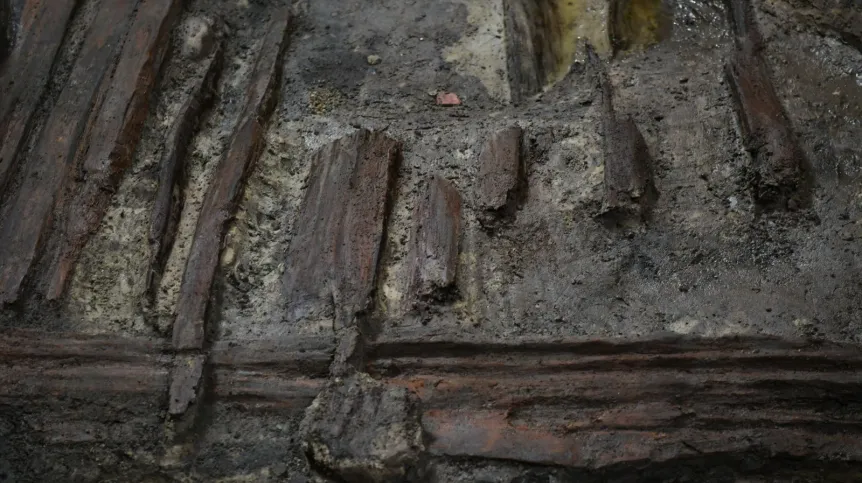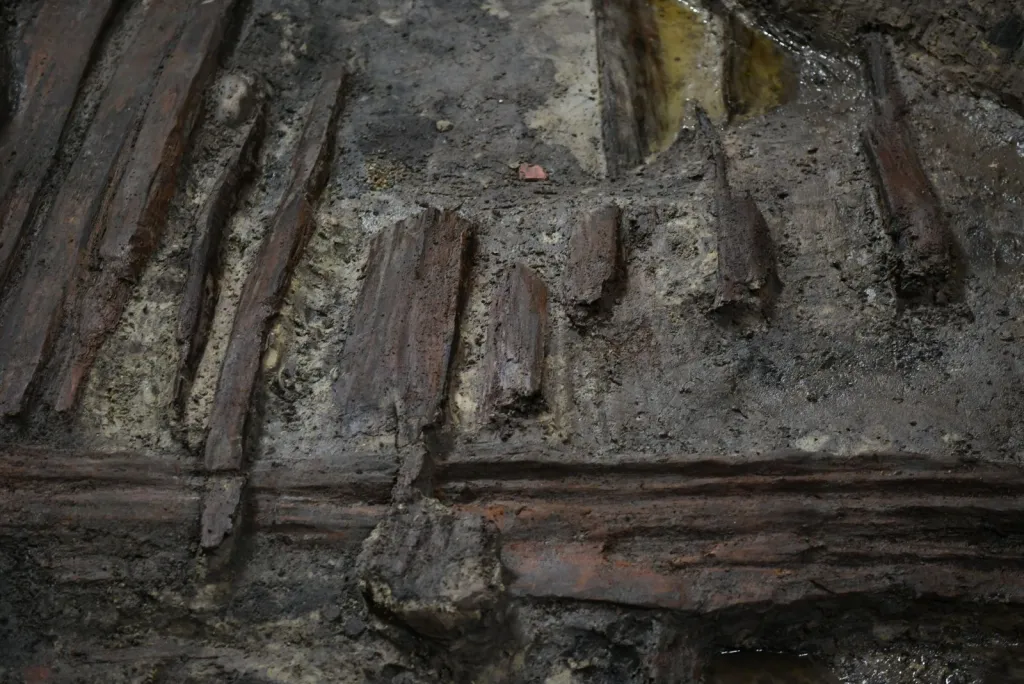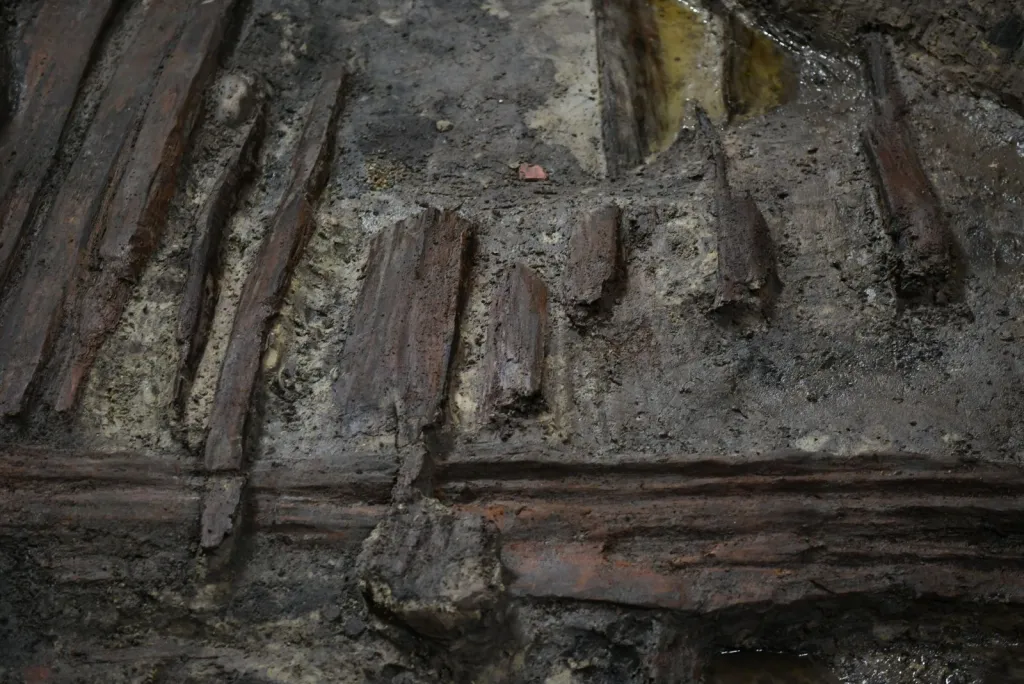
In the cellars of the former seat of the city magistrate, researchers found remains of 10th century Slavic settlement and ceramics. The director of the Museum of Gdańsk, Professor Waldemar Ossowski estimates that the city was founded 60 years earlier than previously thought.
He said: “We are expanding our knowledge about the history of Gdańsk, Poland and Europe.
“We discovered the remains of a Slavic settlement under the Main City Hall, which unquestionably point to the foundation of Gdańsk in the year 930. Thus, we move the chronology of the city back by 60 years.”
He added that the discovery was possible thanks to the cooperation of the Museum of Gdańsk and the Institute of Archaeology of the University of Gdańsk. “It was literally right under our feet the whole time,” he said.
In the 1970s, the late Professor Andrzej Zbierski discovered the remains of a pre-Piast settlement near the City Hall, but his findings were questioned by the scientific community.
Gierszewski said: “He discovered the remains of 13th century buildings and a wooden structure, which he interpreted as a 10th century rampart. To this day, no one - neither archaeologists nor historians - has taken this information seriously, mainly due to the impossibility of precise dating of the find.”
In July and August, however, archaeologists returned to the dig opened 52 years ago and took samples. They confirmed Zbierski's preliminary findings.
Gierszewski said: 'Radiocarbon dating gave a result between the years 911 and 951, while dendrochronology indicated the year 930.”
In December, Slavic ceramics typical for the first half of the 10th century and another fragment of the rampart were also discovered in two new excavations. The collected samples of wood and ceramics will be subjected to further tests.
Museum officials reported that the finds would be secured and then reburied. The museum director emphasized that the remains of the embankment had survived to our times only because of favourable circumstances.
Professor Ossowski said: “Firstly, no one destroyed them in the 14th century, perhaps because they stabilized structures erected on a wetland. Secondly, the embankment is in peat, which perfectly preserves organic material.
“The third reason was that the discovery was made in a wetland, and, according to the professor, water also preserves wood intact.”
He also pointed out that making the find available to the public would be associated with high risk. “There is high humidity in the cellars, additionally, in the summer months, groundwater enters the excavation and rises to such a level that it will be impossible to clearly expose the wooden remains,” he said.
He added that it would be best to rebury the valuable find for the time being, so that it would survive in the state in which it has survived for over 1000 years until there is an idea how to show it to visitors permanently and without risk.
Traces of settlement will be additionally secured with a geotextile material.
PAP - Science in Poland, Piotr Mirowicz
pm/ pat/ ekr/ kap/
tr. RL
Gallery (3 images)
-
 1/3PAP/Adam Warżawa
1/3PAP/Adam Warżawa -
 2/3PAP/Adam Warżawa
2/3PAP/Adam Warżawa -
 3/3PAP/Adam Warżawa
3/3PAP/Adam Warżawa













